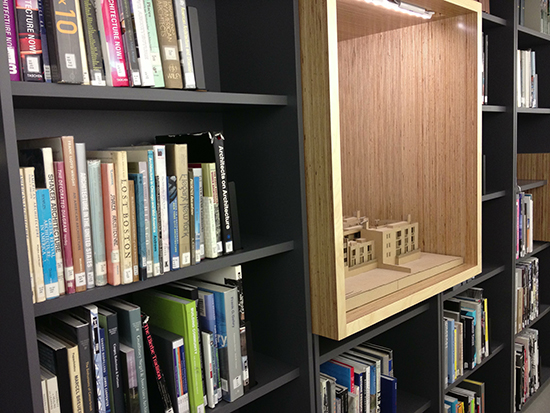
A few months ago, we held a discussion in our healthcare group about evidence-based design in healthcare, which was followed by an interesting discussion of how we already incorporate research and evidence into our practice, and how we might expand this research to include issues that are unique to our healthcare projects. The discussion prompted me to do some research and read, “Design Informed: Driving Innovation with Evidence-Based Design” by Robert Brandt, Gordon H. Chong, and W. Mike Martin.
The book is divided into three main sections: Models, Simulation, and Data Mining; The Social Sciences; and The Natural and Physical Sciences. Each section contains a series of interviews and case studies from architects, facilities mangers, engineers, researchers and scientists who are applying research and evidence to further their design projects and the practice of architecture. While the book was not about Evidence-Based Design that is often cited as a system, similar to LEED, I think the broader view of evidence-based design that the authors take is more interesting and applicable to how we at PAYETTE are incorporating research into our practice.
There are three main points that I took away from this book across all three types of research and approaches to evidence-based design.
- Not all evidence gathering and research needs to be based on the traditional “hard science” research methodology, i.e. randomized, double-blind, laboratory based studies. There are many types of research methodologies that architects can look to as examples of how to collect evidence on complex systems that relate more closely to the multi-faceted, multi-variable systems that comprise our built environment. Good examples of research methodologies come from studies on human behavior from the social sciences and complex “whole-to-part-to-whole” approaches found in epidemiology. The authors made a point to recognize challenges that practicing architects face in trying to gather evidence before and after projects are built based on constrained timelines and budgets. Many of the interviewed researchers felt that even “soft” evidence could be viable in architectural applications, as long as it was as rigorously collected and appropriately applied to the correct kinds of design problems. The most important tasks for architects collecting evidence to support their designs are to clearly define the question, understand the context (in which one collects evidence) and clearly communicate findings in such a way that the client or other researchers can understand the conditions in which the evidence might apply.
- Greater transparency and collaboration is needed among architects, manufacturers and academic researchers to share data and evidence already collected and to develop a culture of rigor that promotes good research in architecture. Many of the researchers interviewed for the “Models, Simulation, and Data Mining” section are working on developing databases of accurate information about performance of building materials and systems. At PAYETTE encounter into similar situations with data (or lack thereof) when using energy modeling software that does not reflect actual performance of materials or finding benchmarks for performance of building types similar to our own. Architects involved in evidence-based practice must work with interdisciplinary teams to create a culture of openness where everyone benefits from data collection and research within the profession.
- Each interviewee was asked whether they felt that evidence enhanced or hindered the creative process, a concern that many architects have when presented with the idea of evidence-based design. The response was resoundingly on the side of evidence. The respondents found evidence as something that enhanced the creative design process. Research and evidence gathering helps architects to better define design problems. Evidence highlights those areas of design where innovation is needed, allowing architects to focus on those areas where their creativity is needed and can be put to best use. Having more data and evidence available to us makes selling designs for high-efficiency, resilient, better designed buildings to our clients easier. Rigorously defining the design problem, deciding what evidence is needed and how to collect it and interpreting the results are all creative acts, particularly when addressing the complex challenges inherent in designing our built environment.
Most of the interviews and case studies were exciting examples architects, engineers and researchers who have been able to incorporate evidence-based design into their every day practice, resulting in creative, beautiful, efficient, sustainable and healthy designs and happy clients. A few of the interviews seemed somewhat out of place for the section in which they appeared and a few of the types of research seemed somewhat beyond what is practical in today’s architecture profession. Several of the approaches to evidence-based design were familiar to me, particular those that incorporated energy modeling and multi-system approaches to sustainability, as these are practices we are already incorporate into our practice at PAYETTE. Compiling our own data gathered from built projects through post-occupancy-evaluation will help us to understand how our buildings perform and how the spaces we design are used by our clients. It was exciting for me to read more about how to rigorously incorporate different types of research into practice and to learn about great examples of the ways that we can become better architects by being design informed.


